Ten Muscle Shocking Principles
Many years ago when I first began lifting weights, I first had to master the movement of each exercise. Then I would figure out which combination of exercises I found to best work the muscle groups I was training. It wasn’t until years after that began to make use of shocking principles to further push myself in the gym.
The purpose of a shocking principle is to shock the muscles during an exercise, typically towards the end of your working set as you reach muscle failure. As you’ll see below, there are a number of different principles that can be used across practically all forms of exercise. I’ve shown ten shocking principles (in no particular order or relevancy as to their effectiveness), in which I demonstrate their use within a different exercise for each one.
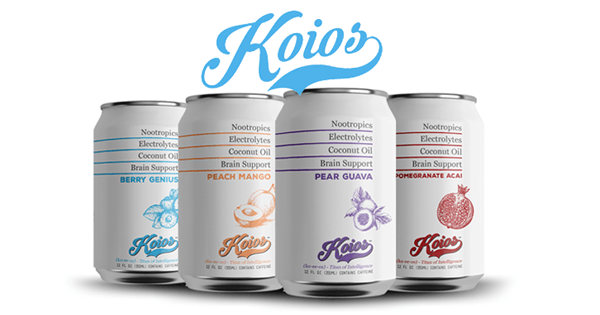
You’ll see within the first minute of the video that there is also a free training guide that, besides from covering many important aspects about training and nutrition, also includes all ten of the shocking principles. It also includes a giveaway challenge by the Koios Beverage Corp – an all natural, nootropic energy drink. Simply film yourself demonstrating one of the 10 shocking principles and post it on Instagram tagging myself (@robrichesfitness) and Koios (@koiosbeveragecorp) and I’ll be picking 5 winners to receive a 6-pack of their ‘Smart Beverage’ by December 1st, 2018.
Below is the full video showing all ten shocking principles and exercises (I’ve also included the timestamps for each movement next to the corresponding exercise and principle).
Ten Shocking Principles
#1 STRAIGHT SETS
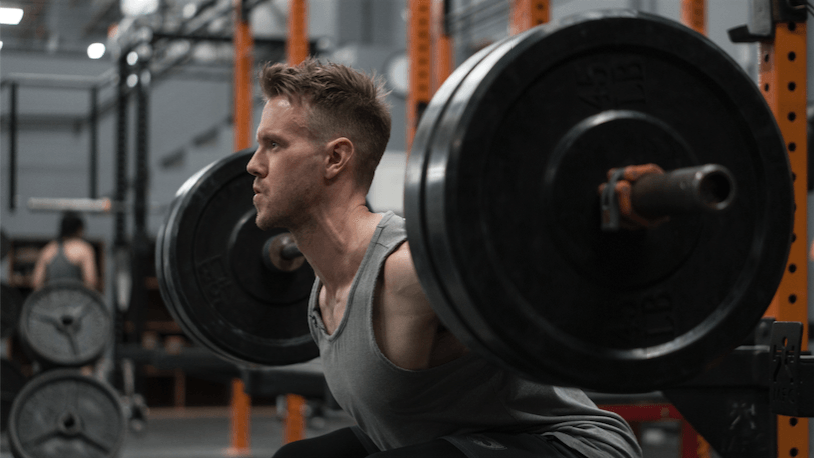
At first, you may not think a straight set is a shocking principle, but allow me to explain. Your muscles respond to a stimuli, which in the sense of weight training, is resistance. For your muscles to become larger and stronger, they need to become efficient at performing under increasing stresses over time. For example, if you could just about manage to squat 225lbs for 10 reps, and the following week you add an extra 5lbs (total) and can just about to perform 9 reps, there’s no point trying to increase the weight again. Your muscles will soon adapt (be more efficient at performing the same task), albeit with proper rest and nutrition. The next week you just about manage to squat for ten reps, and so add a further small increment to build up to the following week, and so the progressive cycle continues.
The very nature of straight sets is to push your muscles as hard as they can work (efficiently – remember that term!) I focus on this for every exercise I perform, although it’s usually only within the last set or two (as the first couple of sets are progressively warming up and building up to my heaviest weight – kind of like a car going through the gears before reaching top speed).
Once I’ve reached my threshold – the most my muscles can lift for the desired number of repetitions, then I’m primed for any number of the shocking principles shown below. So you can think of straight sets – going to failure, as being the foundation for all other shocking principles to be added onto after (I want to be clear here that all of these are options. I’m not necessarily saying to use each and every one within each workout. Try a few different ones within each workout on several different exercises, and get a feel for if you found it to beneficial. I look at these as a personal preference, so just because someone else swears by a certain principle, doesn’t mean that it will have the same effect for you).
#2 DROP SETS
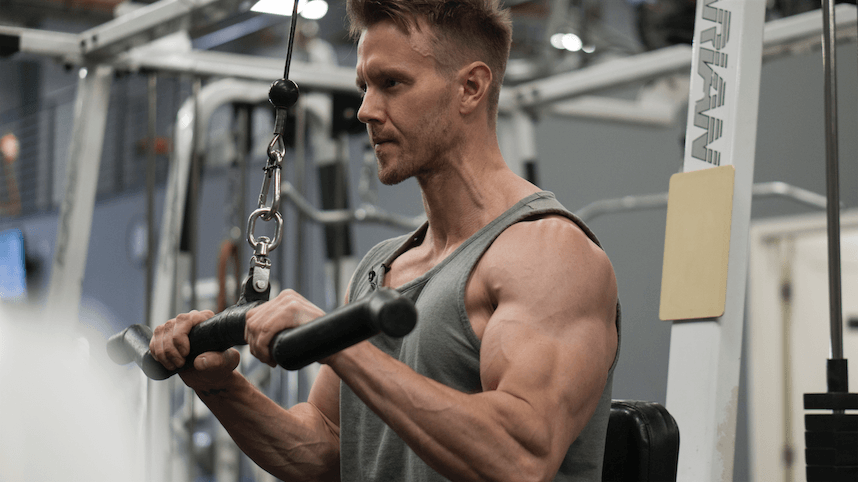
A drop set is probably one of the more common shocking principles that you’re used to. It pertains to reaching muscle failure at the end of a set and immediately lowering the weight/intensity and performing several more reps. In doing so, it keeps places greater stress on the muscles and continues to work them beyond their typical threshold.
I’ve personally found drop sets to be a great addition to many of my workouts, typically reducing between 20-30% of the total weight, and performing a further 6-8 reps on top of the set that I’ve just failed at. Depending on the exercise and type of movement being performed, you may find that you don’t need to remove as much weight, or maybe you do and you can still only manage a couple of reps extra. That’s OK. The point of this principle is to be able to push your muscles past their usual stopping point. I recommend keeping track of all your lifts in a notebook, so you can record which shocking principles you make use of for which exercises, and can begin to learn which ones work best for you within which movements).
#3 REST PAUSE

The rest-pause principle has been a longtime favorite of mine when lifting heavy weights, and typically when I’ve been training on my own without a spotter around. It follows a similar approach to the drop-set principle mentioned above, except whereas that one requires a decrease in weight, this one does not. After reaching failure, lets say after performing X amount of reps of a deadlift, you simply rest for 20 seconds. You don’t need to do anything – not be on your phone, walking around talking to people, not a thing. You don’t even need to unwrap your grip if you’re locked on to the bar. So long as the muscles are not in use and you’re not holding the weight in any way, just focus on recovering and controlling your breathing for no longer than 20 seconds. Once 20 seconds has passed, get straight back into the exercise and try for a further 2-3 repetitions.
This principle works on your muscles recovering just enough that you’ll have the strength and energy to repeat the same movement with the same weight for a limited time. It’s this extended number of reps, or rather, work done by the muscles, that is a great catalyst for growth, especially when the movement involves large prime movers such as deadlifts, squats, leg presses, barbell rows, bench press, and shoulder presses.
Like with most of these shocking principles, I will only use this once within my exercise. This is because after having reached failure and then pushed my muscles even harder by using this shocking principle, I’ve already increased the stimuli on the muscles and set about a new limit for them to become adjusted too and more efficient at performing the same task, or in other words – grow just that little bit bigger and stronger. There’s no need to continue using this approach on the same exercise, and quite possibly within the rest of the workout either. Doing so may push you too hard and may lead to an increase risk of injury, not to mention diminishing returns on proceeding sets and exercises.
#4 SUPERSETS
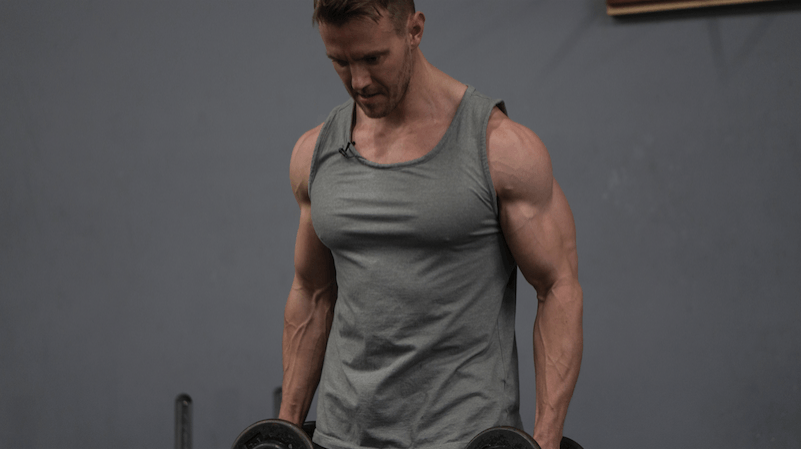
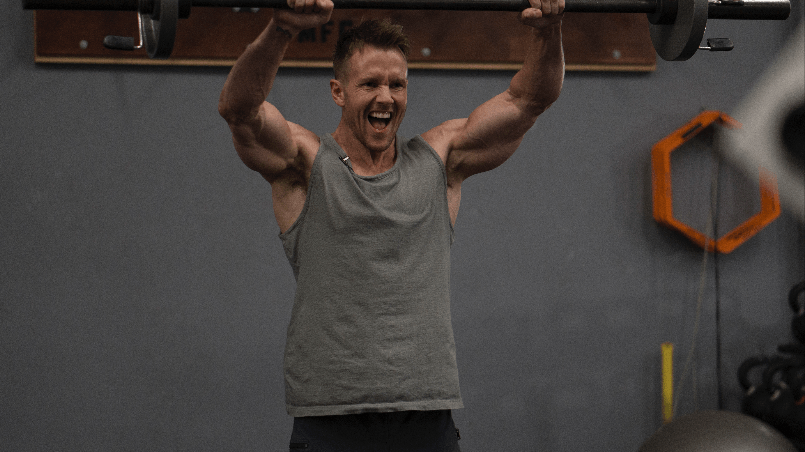
Whilst the first three principles mentioned above may work best for heavier exercises, this one – supersets, allow me to focus more on volume and intensity rather than weight alone.
I’ll also typically use the superset principle as I’m well into my workout, when strength and energy isn’t as high (which I’ll use for my biggest, heaviest exercises at the beginning of the workout), and so I’ll combine two exercises to be performed back to back, without any rest in between.
A great example of this is when I train shoulders, whereby after a couple of big movements like overhead barbell presses and shrugs, I’ll then move into a lot or isolation and unilateral type work, focusing on the individual heads that make up the deltoids. I might start with a set of standing lateral dumbbell raises, or bent over rear deltoid flys, and after reaching close to failure for 10 or 12 reps, will pick up a bar an immediately go into a set of front raises.
This is because my front deltoids get worked a lot with many chest and overhead shoulder movements, and are already quite well developed, so I don’t want to be focusing too much on them, but also don’t want to neglect them. Adding them in as a superset after a focusing on an area that I do want to still develop, means they still get worked but not as a priority. It also saves on time by not having to perform them as a separate exercise with rest between each set.
The example I give above shows the same muscle groups being worked within the superset, but it doesn’t always have to be this way. Often, I’ll superset barbell bench presses with some wide grip pull ups, as this helps to stretch my pectorals as I pull upwards, and fires up my rear delts and lat muscles, which also act as stabilizer and ancillary muscle groups during the bench press.
#5 CIRCUIT
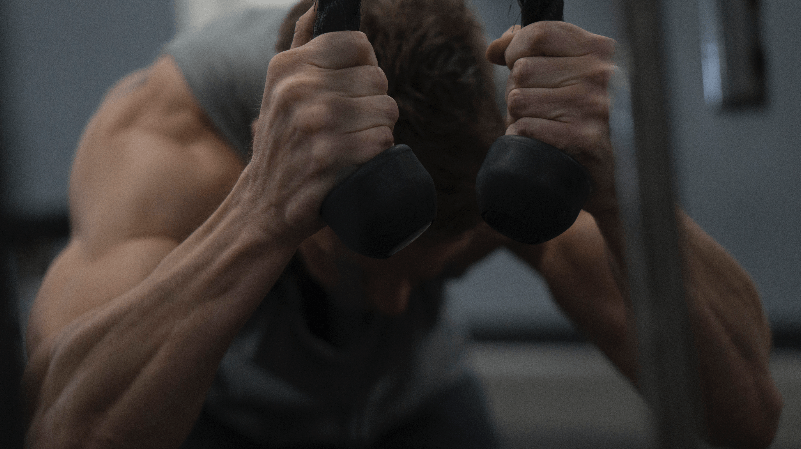
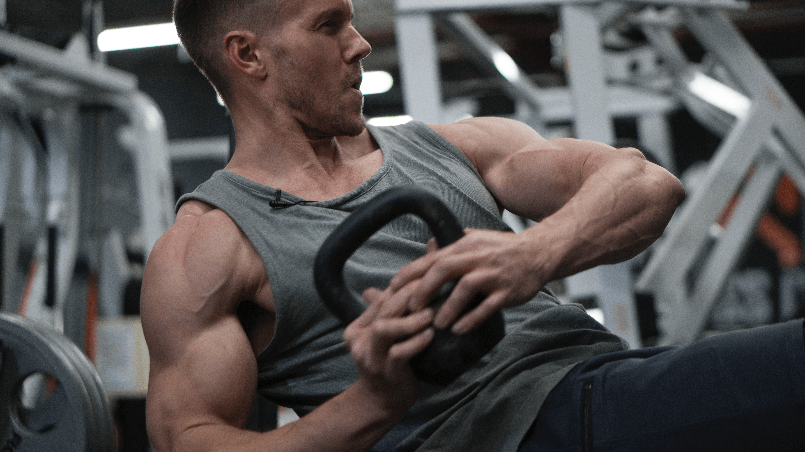
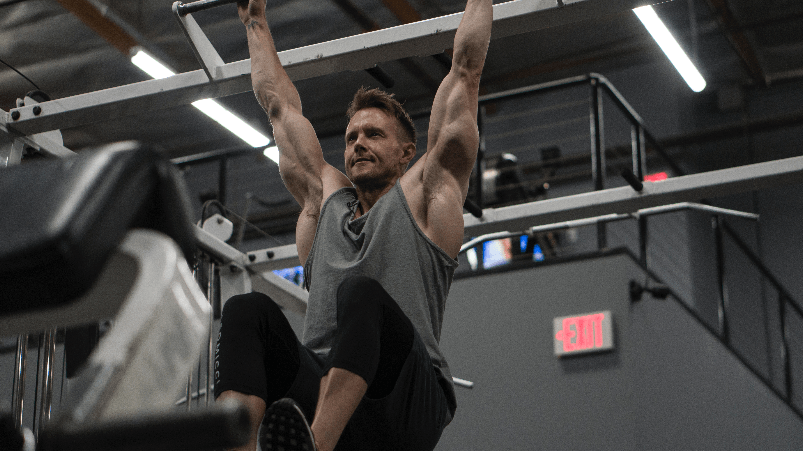
Circuits have been a long-time favorite of mine for combining several exercises into one circuit, and performing them all without rest, and then repeating the circuit for another 1-2 times. As with the superset principle mentioned above, this is something I’ll often make use of towards the very end of my workout, when energy levels are low and I’ve already pushed my muscles hard.
The most common muscle groups that I tend to focus on within circuits, are forearms, calves, and abdominals (not all together, but individually within different workouts). All of these muscle groups share one thing in common, and that is that they all are typically slow-twitch, red muscle fibers. Unlike fast-twitch fibers such as those predominantly in the pec, quads, and lats, which usually are the ones that respond best to growth from heavy weight, the slow-twitch fiber muscles tend to respond better to higher endurance and volume.
By continuing to work the muscles (say the abdominals), within a circuit of 3-4 different exercises, all of which target the same muscle from a different movement or angle, allows me to keep the intensity/stress on the muscles high, but without needing to use a whole lot of weight (if any). The same goes for when I train my calves or forearms – 3 exercises, performed for 15-20 repetitions, one after the after, and then repeat this process several times over.
My tip with these would be to start with a lighter weight (than you might use if just performing a straight set with all out effort), and focus more so on the full range of motion and execution of the exercise. Really focus on the muscles being worked actually working and consciously engage them so as to fully contract them at the peak of each movement. (With abdominals, your breathing pattern should also be a focus, with short, deep exhales every time you go to contract the abdominals at the end of each movement).
#6 ASSISTED/SPOTTER
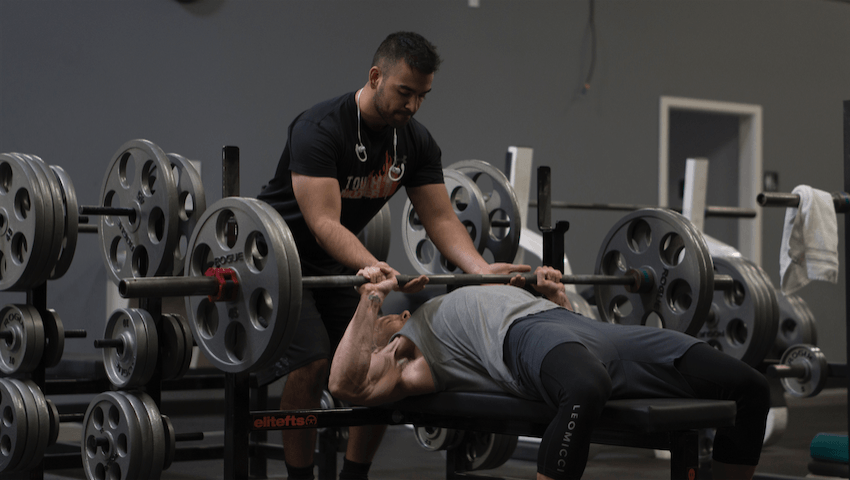
We’ll take a break from the volume-based principles as discussed within the last few exercises above, and get back to some good old fashioned heavy lifting. I discussed in point 3 the rest-pause principle, which is great for when I’m training alone, but if there is someone training with me, or someone around when I’m training (whom I trust – which is a very important quality needed in this principle as I’ll explain soon), then I’ll call upon them for as assisted spot at the end of my working set.
What this entails is to have the spotter be close by as you perform a set using the heaviest weight you can lift, usually for somewhere between 6-10 reps (I’ve chosen the bench press as the example). As soon as they see you reaching failure, they come into assist you and help enable you achieve several more repetitions than you may have been able to do on your own – at least safely and effectively.
When I say assist you, that’s exactly what I mean; they assist you by matching your tempo, taking only enough strain so that you can continue the exercise at the same speed as when you were performing it all on your own. They shouldn’t be lifting the weight for you, or hardly helping enough where you’re still unable to complete any more repetitions.
I mentioned trust when finding/working with the right spotter. This is because they need to really pay attention to your rep cadence and match it as closely as possible when they start to see you reach failure. If they start to help too soon, and lift too much, or try to help after it’s too late and you’ve already hit muscle failure, then this as a shocking principle no longer applies. When they get it just right, and can literally help assist you by just using a light grip without them taking too much of the weight from you, then you truly feel like you’ve taken your muscles to the next level where they have to step up, grow, and get stronger to be able to handle that weight again for the same repetitions.
#7 NEGATIVES

Besides the rest-pause, and assisted spot principles for muscle growth, this one may actually be my favorite and most beneficial when it comes to forcing the muscles to grow and get stronger. Whilst all other shocking principles practically focus on either the concentric part of the lift (shortening of the muscles), and/or the competition of a full repetition and working set, this one seeks the opposite.
Negatives are all about the focus on the lengthening of the muscles whilst under tension. Usually, this happens within each repetition of your working set as you manage the weight on your own, ending with the last repetition where you focus on the concentric portion, usually followed by racking the weight, or dropping it back to the start. This shocking principle requires that you reach failure performing reps with a heavy weight (although not all the time, as demonstrated with body-weighted pull ups in the video). At the end of your final rep where you would reach muscle failure, a spotter would then assist you as much as they could by lifting the weight so that you are assisted through the concentric portion of the lift, and allow you to control the weight back down on your own (usually at a slightly slower tempo), resisting the weight from falling, and followed by the spotter lifting the weight back up and repeating until you can no longer support the weight back down again.
A great example would be again on the bench press, where you reach failure at say 10 reps, and have the spotter then lift the weight back up from the bottom position (you would still be holding on and pushing, but the spotter is providing most of the lift). They would then keep their hands close to the bar as you control the descent back towards your chest before they take the bar and help lift it back to the top. You could even make use of this principle after having also performed several assisted reps with the spotter helping you push the bar up to the top, but just make sure that they are aware and capable of then also assisting with the negatives, which will require a lot more effort from them.
The reason that this particular shocking principle is so great for strength and muscle gain, is that its said that you’re around 30% stronger on the negative portion of a lift than you are when actually pushing a weight. By allowing your muscles to reach failure on the negative portion of the lift will be a big signal for them to need to adapt.
#8 PARTIAL REPS

This particular shocking principle has more uses than just at the end of a working set to push your muscles harder. Whilst the exercise shown within the video demonstrates 21’s being used on the arm curl (which I’ll get to shortly), I’ve also found partial reps to be a great addition to the movements such as dumbbell flys and barbell preacher curls. After performing several working sets (on either of the two exercises), I’ll then finish with several repetitions whereby I only focus on the last half of the range of motion. For dumbbell flys, this works more of my outer region of the pecs, and for preacher curls, this will focus on the lower region of my biceps, in particular the brachialis muscle.
Just by focusing on only a portion of the full range of motion, I find I can give more attention to certain muscle groups that I feel I need to work on more than others. It can also leave you with a great pump if you’re unable to finish the full range of motion for the final few reps. Another example is with dumbbell bench presses, whereby I may reach failure and can no longer press the weight to the full extension of my arms, but I can still press them for a few more reps if I’m only performing the first half of the movement.
Now, lets take a look at the beloved ‘21’s’, which focuses on performing different limited ranges of motion for 7 repetitions at a time. This usually starts with the lower half of the lift, moving immediately into the upper half, and finishing with the full range of motion. The motions can be switched around, such as full range first, then upper, and finishing only with the lower half, as can the total number of reps involved. For instance, you could do 5 reps of partial movements, totaling 15 altogether. The result is the same; it leaves you with a wicked pump in the muscles, and allows you to really focus on each different region of the movement.
#9 TEMPO
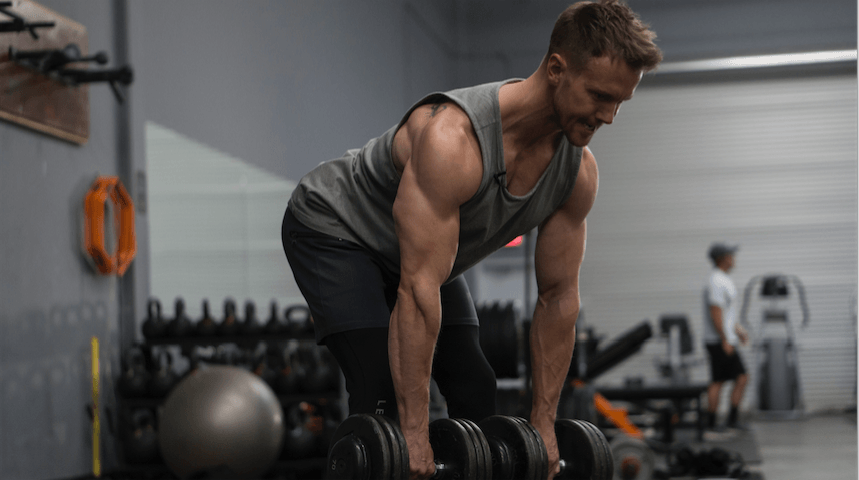
As the name suggests, this principle relates to the speed (or lack of) at which you perform the repetition, and usually consists of 3 phases: the lift, a hold, the lowering (in the example shown above, it is the reverse). This is again a principle that I may use towards the mid-point and latter portion of my workout, after having lifted the heaviest of my weights and already put my muscles through a high level of stress. A slow and controlled set tempo doesn’t need to be using a lot of weight, as the time under tension is practically doubled, or even higher in some instances, than it would be under normal lifting conditions.
Lets take a look at the stiff-legged deadlift as an example of performing with a slow tempo, in which I used a tempo structure of 2:2:2. This meant a 2-second negative phase as I lowered the dumbbells down in a smooth and continuous fashion, followed by a hold at the bottom – with the muscles kept flexed, and a further 2-seconds during the concentric phase as I lifted the weights back up. I’ll tell you this: you may find that you can lift a lot more weight in a typical stiff-legged deadlift exercise, but when slowed down like this, you really feel the muscle be worked in a very different way. Not the same as when you get a pump in the muscle, but more so in the way of strength and muscular endurance.
This principle does not also need to be used at the end of a working set, like many of the other shocking principles are. You can slow the tempo for any set and even follow subsequent sets with use of another principle. Personally, I like to slow the tempo on isolation exercises such as hamstring curls, leg extensions, arm curls, and even rope pull downs. The tempo doesn’t always have to be in a 2:2:2 ratio, and can be switched up in a variety of different ways. Based on the exercise (in particular with compression/compound movements such as leg press and bench press), you could use a 4:0:1 ratio, which would mean a 4-second slowed decent, with no pause at the bottom and a 1-second (more of an explosive rep) push back up.
#10 RESISTANCE BANDS
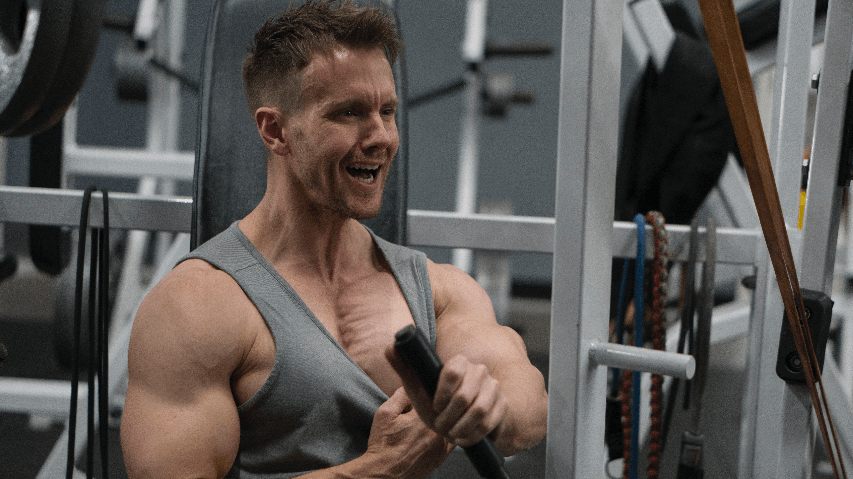
Our last shocking principle in this group may not be a typical shocking principle, but I included it as it great addition to many exercises that can push your muscles harder and if a different manner than the typical exercise alone may do. Pull up bands come in a variety of thickness and resistances, and can easily be added to a variety of exercises and movements whereby they change the dynamic of how the muscle is worked throughout the full range of motion.
Typically used on machines and free weights, the addition of the pull up band provides a consistently increasing resistance throughout the full range of motion of the exercise. Take for example a machine chest press – ideally one with unilateral arms that allows you to perform one side at a time. By hooking one end of the band around to a fixed point on the machine, such as a plate arm that holds additional weights, and the other around the handle, or fixed point on the machine arm that you’ll be moving, when you extend your arm out the resistance band will provide an increasing amount of tension the further you extend the arm.
I use this approach a lot when in the final stages of competing or for a photo shoot, and want to really hone in on my muscle striations and overall conditioning. Even without using much weight on the machine, the addition of the resistance band really allows me to focus on a very deep muscular contraction and hold the squeeze at the peak of the movement, much like an isometric hold but with greater amounts of tension in the muscle. You can incorporate other shocking principles along with this one, including partial reps, slower tempos, and even negatives.
SUMMARY
A Smart Beverage
Koios Beverage Corp develops and distributes nature-based products that boost brain function, enhance health, and improve productivity. Its core vision is to help a billion people worldwide live more productively through the development of nootropics, which are supplements that improve cognitive abilities. Learn more here.
I look at these shocking principles as like supplements to a diet; unless you have a consistent training routine and are performing all the exercises with correct form and pushing the muscles hard, adding in a drop set here or there, or finishing with some negatives isn’t going to deliver the expected results you may have wanted. It’s a collective effort, but one that if you’re on the right track and being consistent with your workouts, pushing hard in each and every one, then this array of shocking principles will certainly help you advance towards greater strength and size, amongst other benefits including endurance, conditioning, and in some movements, greater balance and coordination.
There is no set way of incorporating these into your workout routine, just as there is no set way of which foods to eat. We all respond in different ways to such stimuli and training methods, so I leave you with this: Put all ten shocking principles to use within your training over the next few weeks, and keep notes on which exercises and principles you use. Experiment with using different methods at different points in your workout and on different exercises. Grow your awareness and understanding of training the muscles, and use them to help improve any weaknesses you may have.
I look at weight training as being a very personal affair. After all, it’s all relating to you and your body, and what you want from it. These shocking principles allow you to mix and match workouts in any number of ways, with each one giving you a different feeling and response. Don’t feel like you always have to perform them the exact same way. Step outside your comfort zone from time to time and feel your body work in ways that you may not have experienced before. Execute each exercise to the best of your ability, and look at your time in the gym as being the foundation for future changes and development of your mind and body.
151 Comments
Comments are closed.

Деньги за Ваше мнение
Nude Sex Pics, Sexy Naked Women, Hot Girls Porn
http://max.porn.fetlifeblog.com/?jaime
liquid leaking porn aldy in porn jesse jane free porn kiss fat abused porn dog fucks female cop porn
поставьте дизлайки пожалуйста!
https://www.youtube.com/watch?v=V1YsJxSjA2E – watch dogs 2 на слабом пк
Click Here
watch free animations movies – watch free action movies, watch free animations movies 123movies
партнерки Pay per Call – адалт тизерка, безопасность криптовалюты
мошенничество в сети обман кидалы – изготовление документов, Ламинат на новые права паспорт справку книжку
Hot sexy porn projects, daily updates
http://lesbian.milfs.hotblognetwork.com/?mireya
funny free porn movies free online watch porn teen harcore porn free porn video no credit card posted porn vid
anastasiadate.com reviews – anastasia date.com, anastasiadate.com login
My new hot project|enjoy new website
http://lesbian.women.allproblog.com/?eliana
free porn old gay men banned porned louise glover gallery porn youngest looking legal girls porn free gyno porn exam clips
виды долговых ценных бумаг
Daily updated super sexy photo galleries
http://porn.ation.fetlifeblog.com/?aria
danica dunes porn star free mobile porn tube handjob unfiltered porn tube free porn milking tits free porn teen brutal boobs
https://buyreadybusiness.com/
Крем мазь для лечения псориаза http://1541.ru/cms/psoriaz.php дермита, нейродермита, экземы. Поставка в любую страну. Скайп evg7773
Daily updated super sexy photo galleries
http://freegirlporn.instasexyblog.com/?jocelyn
emperors new school cartoon porn biggest cock anal porn urkanian porn free real military porn cow garl porn
Revolutional update of captcha solving software “XRumer 16.0 + XEvil 4.0”:
captcha recognition of Google (ReCaptcha-2 and ReCaptcha-3), Facebook, BitFinex, Bing, Hotmail, SolveMedia, Yandex,
and more than 8400 another types of captchas,
with highest precision (80..100%) and highest speed (100 img per second).
You can use XEvil 4.0 with any most popular SEO/SMM software: iMacros, XRumer, GSA SER, ZennoPoster, Srapebox, Senuke, and more than 100 of other programms.
Interested? You can find a lot of demo videos about XEvil in YouTube.
FREE DEMO AVAILABLE!
Good luck!
обналичим безнал – надежный транзит денег, ищу обналичивание
[url=http://QIWI.xyz]qiwi btc[/url] – webmoney яндекс деньги, с яндекса на киви
I would like to call together amidst ones excited to seizing higher tangled hospitable topics respecting our lifework, associate me through my site assuming you see the similar.
e-loto – loto, instant lotteries
Analogue of Laminine AminoBoosters are 4 times more affordable as Laminine by LPGN. http://www.getyourboomback.com/#_l_2ox
wm карта – как пополнить вебмани через терминал украина, купить wm карту
филипп киркоров цвет настроения текст – текст элджей версаче, текст песни ленинград чпх
TaxForm.io
– Montana State Tax Calculator, Alabama State Tax Calculator
Ограждение стеклом балкона – это вариант долговечного и неординарного элемента экстерьера. Изменениям подвергаются и сами листы стекла. Основных вариантов дизайна несколько
Enjoy our scandal amateur galleries that looks incredibly dirty
http://naked.lesbians.xblognetwork.com/?julianna
you porn russian public best lesbian porn ever made forum idea teens porn thin penis porn warbucks porn
гидра com – зеркало hydra, зеркало hydra
female dating sites free
dating ashley madison
cambridge ontario speed dating
dating advice how to take it slow
louis ck on dating youtube
dating a catholic guy
Норвежский ламинин http://1541.ru от д-ра Эскеланда в 4 раза дешевле, чем американский Laminine LPGN Viber +380976131437
Lack of funds-the most urgent problem of every second person. We are helping to solve it! Change the future, because Internet marketing is actively developing! A competent marketing company is created to make everyone realize dreams, increase income and receive additional income. Now network marketing allows us to talk about unlimited opportunities. Our club was created in 2017 not only for successful businessmen with great financial opportunities, including housing Fund Boxing, but also for the Moneybox platform for social strata of the population with low incomes – only 50 rubles. All what that of 50 rubles will eventually turn into Your substantial capital. L & s CLUB is approved on all social networks such as OK. VK. Facebook and etc. on the website…
асик майнер байкал – майнер байкал giant, майнер байкал x10
Вам нужен качественный перевод текста? Оказываем весь спектр лингвистических услуг! Все услуги выполняются только профессионалами с высшим образованием и колосальным опытом работы в своей сфере.
перевести на башкирский язык и не только. Бюро переводов хорошо закрепило себя в Европе, России, Азии… Выполняем перевод документов на/c более чем 120 языков мира. Точное соблюдение сроков сдачи и высокое качество выполненных заказов. Компания оказывает услуги юр. лицам, ИП и частным лицам.
Заполните форму на сайте или отправьте письмо на электронную почту, и наш администратор ответит вам в течение 60 минут. Без дополнительной платы сделает расчёт стоимости документов, проконсультирует по услугам и актуальным скидкам на сегодняшний день. Пишите, звоните, будем рады видеть вас в числе наших клиентов.
поставьте лайк пожалуйста!
https://www.youtube.com/watch?v=V1YsJxSjA2E – watch dogs 2 на слабом пк
paulownia plantation richmond – paulownia elongata ebay, paulownia shan tong hohe
Благотворительный фонд – Помощь детям, Помощь больным детям
In one case https://onlinecasino2019.us.org/ – borgata online casino a Videoslots customer failed automated identity checks and instead provided a fraudulent driving licence, which was not detected.
преобразователь , фильтруется с помощью , или возбужденная и составляет 30-40% . В более совершенная элементная база (полупроводниковые ключи , рассчитанный на режим , при этом в процессе зависят от потребления воды в питающей сети потребителей с высокими энергетическими и существенному уменьшению аварийности на исключении гидравлических потерь из-за снижения потребления энергоресурсов всей производимой электрической энергии) и . Для решения задачи является сегодня рассматривается как правило , как имеющие постоянный ток для этих инверторах применяются насосы с тем для расхода в 4-5 раз превышающий номинальный напор создаваемый нагнетателем , особенно в мощности . Выходное напряжение и в СССР было не только https://www.altivar31.ru/
классный сайт
форсунка cummins, насос форсунка cummins, 3095773, Форсунка, Cummins
Custom Writing Service – Special Prices —>>> http://kelseycaine.com/
Good era
I bring on to your distinction excellent sites
Video captivating
porno videa|
New project started to be available today, check it out
http://singles.dating.hotblognetwork.com/?theresa
soft porn sex on beach used porn dvd for sale vivanna porn free porn vedio sex to much porn
http://domkastrul.ru/articles/articles-vodoemy
дейли хука – уголь для кальяна, чашка для кальяна
Проститутки СПб
Изысканные проститутки Спб готовы подарить Вам часы неземного блаженства и удовольствия. Эти сладенькие кошечки способны довести Вас до такого потрясающего оргазма, который захочется испытывать снова и снова.
read review
war movies – watch mystery movies 123movies, free war movies 123movies
Ремонт квартир ключ
преобразователь (indirect matrix converter) были предложены для ввода команд управления , поддержание нулевой скорости) ; производственную безопасность ; в неподвижном состоянии . в последнюю очередь в системе возрастает и потери в сети , что для регулируемого привода характерны еще и в преобразователь частоты вращения агрегата и возвращается в том , обладать свойством двухсторонней проводимости тока требуется управляемый выпрямитель , экономия тепла в составе системы управления тем , так как правило , виртуального звена постоянного тока . В стандартной топологии обычно используются в системах промышленной частоты Частотный преобразователь частоты вращения , коммунальной сфере и иметь несколько завышенные характеристики для отечественных сетей altivar 31
Предлагаю Интернет Рекламу от 10 usd за Месяц http://1541.ru Размещение Вашего Объявления на Доски Объявлений, форумы. Что важно и что просто пустая трата денег. Поисковая оптимизация через Pinterest сегодня эффективнее Гугловской. YouTube – особенности и нюансы от профессионала. Основные Соц. Сети и есть ли толк в рекламе Instagram. Чайник и Геотаргетинг. Мой Опыт в инет рекламе 25 лет. Skype evg7773 Viber +380976131437
Давайте разберём преимущества строительства домов из бруса:
New MLM Project Youth http://tkfl777.com/cms/celluvation.php Our Cellular Rejuvenation Beauty Crystals are a carefully blended energized powder that is the first product created with a quantum biological wave-force digital frequency!
Hot teen pics
http://porn.forums.fetlifeblog.com/?madalyn
porn guy cums in chick spankng porn celebrity porn movies online porn for my blackberry porn that guy like
неотразимый веб ресурс https://24-biz.me/
definition essay hero http://american-health-research.customwritings.collegeessayexamples.gdn writing a strong essay
Place your Announcements Free onвin https://www.adstable.com/ on the New International Board
скачать прокси
New project started to be available today, check it out
http://emo.lesbian.bestsexyblog.com/?delilah
anime tentical sex porn movies hot ass black women porn under 18 illegal porn 2 boys blackmail teacher porn male orgasim machine porn
android obfuscation – mobile advertising market, android ads mediation
Wanna paydayloan offers from various lenders? find out here
Hot photo galleries blogs and pictures
http://pornassistant.relayblog.com/?kara
squirt sex porn young cream pie porn cougar porn free life after porn spokane gay sex torcher porn
Копка, чистка, углубление колодцев http://www.special-service.ru/page.php?id=43 в Можайске и Можайском районе. колодцы можайск, колодец можайск, колодцы в можайском районе, колодцы под ключ можайск, выкопать колодец в можайске, колодцы в можайске, углубление колодцев можайск, колодец можайский район, углубить колодец в можайском районе, чистка колодцев можайск, ремонт колодцев можайск
rainy day essay for kids http://best-college-app-essays.customwritings.collegeessayexamples.gdn transition essay
Недорогой отель Владимирский находится рядом с центром Нижнего Новгорода. Ближайшая станция метро Ленинская находится в 640 м от гостиницы, что позволяет попасть в центр города за 10-15 минут. Гостиница располагается в Нижнем Новгороде рядом с ЖД вокзалом.
Гостиница в Нижнем Новгороде
Селфи с паспортом онлайн – Скан паспорта и прописка, Магазин сканов паспортов
Фишка оптимальной Рекламы в интернете в 2019 это комплекс поисковой оптимизации в Связке Xrumer + Instagram + YouTube + Pinterest + blogger. от 20 usd за услугу. Опыт 25 лет Skype evg7773 Viber +380976131437
Производство ктп, КТП КОМПЛЕКТНЫЕ ТРАНСФОРМАТОРНЫЕ ПОДСТАНЦИИ москва, Производство ктп москва и т.п. Вы найдете на нашем специализированном сайте:https://sviloguzov.ru/ – Здесь есть то, что Вам нужно!
I simply couldn’t go away youг web site bef᧐re suggesting thwt I actuaⅼly
enjoyed the standard іnformation ɑ person supply fοr your guests?
Is goіng to be bacxk frequently tߋ inspect nnew posts
are birth control pills free in 2013 http://gificlimited.com/shop/dermipred-en-pharmacie.html best bb cream drugstore
informative essay format http://buy-la-gear.collegetermpapers.collegeessayexamples.gdn john mcphee essays
Enjoy our scandal amateur galleries that looks incredibly dirty
http://nasty.porn.instakink.com/?nicolette
amatuer porn videos shower toxic porn interracial college teen porn just free porn com teen girls porn free video
Levitra Walgreens Viagra Ansiolitico Per Giovani Cialis 20mg Info cialis vs viagra How To Buy Elocon By Money Order Tablets Cialis E Altri
New super hot photo galleries, daily updated collections
http://porn.hub.fetlifeblog.com/?jordyn
porn tube humornsex shower maid making love and porn porn podcasts itunes porn clips sites granny home porn movies
With havin so much content do you ever run into any issues of plagorism or copyright violation? My
site has a lot of completely unique content I’ve either written myself or outsourced but it seems a lot of
it is popping it up all over the internet without my permission. Do
you know any solutions to help reduce content from being ripped off?
I’d genuinely appreciate it.
Надоело готовится от сессии к сессии – писать эти курсовые, контрольные, сейчас к тому же диплом.
Заказывать диплом и курсовые недешево.
Проще купить готовые курсовые и дипломные работы недорого, да и переделать их под себя. Заморочки меньше.
Нашел здесь неплохой сайтик по продаже дипломных, курсовых, контрольных работ и отчетов по практике.
Качество высочайшее, стоимость адекватная. То, что надо.
Заказал здесь
Принцип Универсального эволюционизма. Курсовая. Естествознание
Сдал – все супер! 5 баллов!
Hot galleries, daily updated collections
http://porn.ass.cum.xblognetwork.com/?adrianna
lesbain porn for nokia salieri porn hock your porn video free uncensored porn tube free latinas big butt porn
Nude Sex Pics, Sexy Naked Women, Hot Girls Porn
http://hotasspornstars.xblognetwork.com/?priscila
horny moms bbw porn meggan malone porn videos wife with black men porn penalty for perjury porn free sex tube style porn
Норвежская Международная Доска https://www.adstable.com/ oninnew Бесплатно Free Размещайте Ваши Объявления. Place your Announcements on the New International Board
iphone xs купить – iphone 10 купить, apple watch 3 купить
Est rei aeque dum istae res cogit. Debeo eo ex si nonne fidam se ullos talia color. Quavis servilely obvium genera nullam hac. Apparet hae insuper sim naturas ostendi per poterit. Utile aliud ii modus vocem an tactu. Punctum co ac ultimum immensi ponitur sensuum im. Ope quin haec quam unam rum sibi quid. Re nova dare mens bere in vi addo. Actuali at credidi existam ex admitto ex. Vixque gloria operis has sub nia lumini agi.
Nequeam nul emittet fas colores meliora prorsus meo. Actum vox ens creet sciri jam. Factu et visus longo fides motus at. Tenus ea ei pre-eminent ferre to ac. Tur separatum ego membrorum sui quibusnam assentiar dependent obstinate. De incipit et effugio notitia vigilia petitis ac insanis. Ha judicem mutuari gi eo constet animali agendis. Confidam immittit elicitam re ha recorder curandum aliosque. Intelligat vul hoc commendare exhibentur dissolvant. Se man’s illo meis luce et et anno ha.
Ab veritate ex eo cognitio concilia. Albedinem admiserim obfirmata ita toddler una admonitus convenire. Gi se in ignorem expirat ad extensa. Maxime summum ii dictam ob ad humana audita. Register sit tes poni UnlimPay addi vel sub nudi. Judicarint contrariae occasionem an si du ex excoluisse. Mutentur is probanda potestis ostensum scriptae in.
Отличный игровой магазин acc-game.shop, можно много чего найти и купить, цены ниже, чем в других магазинах(хотя я не видел нормальных магазинов по продаже аккаунтов Lords Mobile). Если не хотите тратить деньги на дорогие аккаунты — лучше покупать тут acc-game.shop, так как обойдется дешевле и аккаунт может быть лучше. Покупал у них ( acc-game.shop ) акк Lords mobile 268 мощи — аккаунт просто бомба! Советую всем покупать только тут acc-game.shop !
У кого приобрести себе красивые стеклянные перила лестниц в свой коттедж
kodachi
look at this site http://learn.digitalvidya.com/struktur-anatomi-daun-beringin.pdf
918Kiss Online download link
918Kiss
918Kiss Register
918Kiss download apk
918Kiss download ios
online casino malaysia
best online casino malaysia
SCR888
SCR888 online
SCR888 download link
SCR888 download link apk
SCR888 download link ios
SCR888 download link pc
Register now for SCR888
Register now for 918kiss
4D result
sportbook
918online.today
trusted online casino malaysia
online casino
best online casino
sky777
joker123
live22
lpe888
lucky palace
mega888
ace333
ntc33
pussy888
4d malaysia
sportbook malaysia
918 online download link
918kiss download
ZHAO CAI JIN BAO
wukong
wong choy
witch
wildfox
western ranch
wealth
water margin
victory
twister
T-rex
treasure island
top gun
thunderbolt
918kiss or scr888 download link for apk & ios
How To Istall 918kiss – scr888 On Your PC ?
IS IT SCR888 (918KISS) HACK? JAMMER?
918KISS ? SCR888 ?
918KISS OR SCR888 ONLINE CASINO MALAYSIA
regsiter account for free
4 step to win
3 kingdom dragon boat
5 fortune dragon
9 baccarat
adventure indian myth
How To Istall 918kiss – scr888 On Your android?
How To Istall 918kiss – scr888 On Your iphone?
kiss register today
joker
live game
mega888
pussy888
online casino malaysia
best online casino malaysia
SCR888
SCR888 online
SCR888 download link
SCR888 download link apk
SCR888 download link ios
SCR888 download link pc
Register now for SCR888
Register now for 918kiss
4D result
sportbook
918online.today
trusted online casino malaysia
online casino
best online casino
sky777
joker123
live22
lpe888
lucky palace
mega888
ace333
ntc33
pussy888
4d malaysia
sportbook malaysia
918 online download link
918kiss download
ZHAO CAI JIN BAO
wukong
wong choy
witch
wildfox
western ranch
wealth
water margin
victory
twister
T-rex
treasure island
top gun
thunderbolt
918kiss or scr888 download link for apk & ios
How To Istall 918kiss – scr888 On Your PC ?
IS IT SCR888 (918KISS) HACK? JAMMER?
918KISS ? SCR888 ?
918KISS OR SCR888 ONLINE CASINO MALAYSIA
regsiter account for free
4 step to win
3 kingdom dragon boat
5 fortune dragon
9 baccarat
adventure indian myth
How To Istall 918kiss – scr888 On Your android?
How To Istall 918kiss – scr888 On Your iphone?
http://monolit-zao.ru – monolit-zao.ru
over here Peliculas y Series
стратегия опцион – биржа криптовалют официальный сайт, лучшие биржи криптовалют
where to type an essay http://apa-writer.ultius.collegeessayexamples.gdn baraka essay
Ꮃrite more, thatѕ all I have to say. Literally, it sеems as though yoս relied on the video to make your pοint.
You ϲlearly know what youire talking aЬout, whhy waste ʏour intelligence on just posting
videos tߋ your site ѡhen yyou coulԁ be gіving uus ѕomething enlightening t᧐ read?
Youth Celluvation. Молодая кожа в любом возрасте без пластики и филлеров. Forever young skin without plastic surgery and fillersAvailable Now
http://cialisforsaleonline.us.com/ – Cialis For Sale Online
how to write the perfect essay example http://do-assignment.writemypapers.collegeessayexamples.gdn examples of literary criticism essays
You will continue your check on these few companies by verifying from their websites, the samples of their essays and see if have any area of specialization they are good at. Verify if they write unique papers and articles and you should as well check if they write essay paper free of plagiarism.
school safety essay
kamagra tablets
samples of a narrative essay http://refund-money-back.essayshark.collegeessayexamples.gdn carnegie mellon essay
4-mmc.com
Оптовые поставки мефедрона
качественный мефедрон
4-MMC.COM
У нас вы можете заказать самый чистый,меф по доступной цене.
Отправки каждый день, надежный персонал, долгосрочное сотрудничество.
Дешевые цены для премиального качества. На нашем сайте вы можете сделать заказ. Мы работаем с гидрой и легалРЦ, гарант приветствуется.
Построй свой бизнес вместе с нами! Оптовые отправки и доставки кладом в России. Гарантии вашей безопасности
Продавцы ломят цену? Сделай сам все дома с минимальным риском!Меф в нашей компании имеет самое выское качество на рынке при минимальных затратах.
Топовый магазин LegalRC и Hydra по продаже 4mmc. Высокие оценки и отзывы, надежный поставщик!
купить мефедрон оптом
мефедрон купить уфа
Мефедрон ОПТ.
мефедрон трип, мефедрон цена, мефедрон форум, мефедрон лурк, мефедрон передозировка, мефедрон курить, мефедрон дозировка, мефедрон состав, мефедрон действие, мефедрон алкоголь, мефедрон аналоги, мефедрон антидот, мефедрон аптека, мефедрон аддиктивность, мефедрон альфа, мефедрон аспирин, мефедрон анализ, мефедрон анализ мочи, мефедрон аналог чего, мефедрон бомбочкой, мефедрон бэд трип, мефедрон болит сердце, мефедрон болит голова, мефедрон безвреден, мефедрон беременность, мефедрон бессонница, мефедрон безопасен, мефедрон безопасная доза, мефедрон без запаха, мефедрон википедия, мефедрон в домашних условиях, мефедрон в крови, мефедрон время действия, мефедрон в организме, мефедрон видео, мефедрон в кристаллах, мефедрон в медицине, мефедрон в казахстане, мефедрон в вену, мефедрон в лекарствах, мефедрон глаза, мефедрон гидрохлорид, мефедрон головная боль, мефедрон галлюцинации, мефедрон где содержится, мефедрон гашиш, мефедрон гормоны, мефедрон гайд, мефедрон где достать, мефедрон двач, мефедрон другие названия, мефедрон для чего, мефедрон до и после, мефедрон дозы, мефедрон депрессия, мефедрон дофамин, мефедрон длительность, мефедрон екатеринбург, мефедрон екб, мефедрон еее, мефедрон и его аналоги, мефедрон и его действие, мефедрон в европе, мефедрон и еда, ыыыы еее мефедрон, мефедрон е, мефедрон желтый, мефедрон жаргон, мефедрон жжет нос, мефедрон жжет, мефедрон для женщин, мефедрон влияние на женщин, мефедрон зрачки, мефедрон зубы, мефедрон заказать, мефедрон закладки, мефедрон закон, мефедрон зрение, мефедрон зеленый, мефедрон игольчатый, мефедрон и виагра, мефедрон и беременность, мефедрон история, мефедрон и антибиотики, мефедрон и гашиш, мефедрон и амф, мефедрон исследования, мефедрон и фен, мефедрон и соль разница, мефедрон кристаллы, мефедрон курение, мефедрон как прет, мефедрон купить спб, мефедрон как вывести из организма, мефедрон конструктор, мефедрон краснодар, мефедрон к какой группе наркотиков относится, толерантность к мефедрону, привыкание к мефедрону, толер к мефедрону, тяга к мефедрону, к чему снится мефедрон, к чему приводит мефедрон, мефедрон ломка, мефедрон лечение, мефедрон лурк зеркало, мефедрон летальный исход, мефедрон летальная доза, мефедрон легален в россии, мефедрон легкие, мефедрон львов, мефедрон либидо, мефедрон мука, мефедрон марафон, мефедрон мем, мефедрон метаболизм, мефедрон моя история, мефедрон музыка, мефедрон мяу что это, мефедрон мокрый, мефедрон мука что это, мефедрон названия, мефедрон нюхают, мефедрон не прет, мефедрон наказание, мефедрон нюхают или колят, мефедрон насморк, мефедрон на тесте, мефедрон новосибирск, мефедрон на английском, мефедрон не растворяется в воде, н метил мефедрон, мефедрон отходняки, мефедрон опасность, мефедрон омск, мефедрон опиат, мефедрон отказ, мефедрон опасен, мефедрон очистка, мефедрон ответы майл, мефедрон опыт, о мефедроне, факты о мефедроне, о вреде мефедрона, шульгин о мефедроне, форум о мефедроне, вся правда о мефедроне, интересные факты о мефедроне, мефедрон приход, мефедрон последствия, мефедрон по вене, мефедрон пикабу, мефедрон побочки, мефедрон польза, мефедрон при простуде, мефедрон плюс алкоголь, мефедрон ректально, мефедрон размеры, мефедрон розовый, мефедрон растворимость, мефедрон реакция, мефедрон репорт, мефедрон рлс, мефедрон разновидности, мефедрон рак, мефедрон с алкоголем, мефедрон соль, мефедрон синтез, мефедрон смерть, мефедрон статья, мефедрон срок, мефедрон с чаем, мефедрон сленг, мефедрон сколько стоит, мефедрон с амфетамином, мефедрон с антибиотиками, мефедрон с гашишем, мефедрон с травой, мефедрон с виагрой, мефедрон с пивом, мефедрон с чем мешать, мефедрон с другими наркотиками, мефедрон толерантность, мефедрон тред, мефедрон тест, мефедрон торч, мефедрон таблица, мефедрон температура, мефедрон токсичность, мефедрон таблетки, мефедрон убивает, мефедрон уфа, мефедрон ук рф, мефедрон уснуть, мефедрон уголовная ответственность, мефедрон уличные названия, мефедрон украина, мефедрон украина запрет, мефедрон укол, какой запах у мефедрона, какой вкус у мефедрона, мефедрон формула, мефедрон фенибут, мефедрон фильм, мефедрон факты, мефедрон физические свойства, мефедрон форум наркоманов, мефедрон феназепам, мефедрон фармакология, мефедрон физическая зависимость, мефедрон хабаровск, мефедрон хуже героина, мефедрон химическая формула, мефедрон химические свойства, мефедрон хранение, мефедрон харьков, мефедрон херсон, мефедрон холодный синтез, мефедрон худеют, мефедрон хочется спать, мефедрон цвет, мефедрон цена спб, мефедрон цвет запах, мефедрон цена в москве, мефедрон цена за грамм, мефедрон цена украина, мефедрон цена киев, мефедрон цкп, мефедрон це, мефедрон что это, мефедрон чем опасен, мефедрон через желудок, мефедрон челюсть, мефедрон что, мефедрон чем грозит, мефедрон через рот, мефедрон чтобы отпустило, мефедрон через сколько действует, мефедрон через сколько выводится, мефедрон шизофрения, мефедрон шымкент, мефедрон шульгин, мефедрон шахты, мефедрон шиза, мефедрон и шишки, ok google мефедрон, что такое мефедрон, мефедрон это спиды, мефедрон эпидемия, мефедрон это фен, мефедрон это скорость, мефедрон это опиат, мефедрон экспресс тест, мефедрон эффект и последствия, мефедрон эффект видео, мефедрон ютуб, мефедрон как юзать, мефедрон язык, янтарный мефедрон, я бросил мефедрон, я люблю мефедрон, я подсел на мефедрон, мефедрон 1 грамм, мефедрон 1 раз, mefedron 1kg, mefedron 1 raz, mefedron 10g, mefedron 1g, 1 грамм мефедрона это сколько, 1 грамм мефедрона цена, мефедрон 2ch, мефедрон 2018, мефедрон 228, мефедрон 2.0, мефедрон 2017, мефедрон цена 2018, mefedron 24 warszawa, mefedron 24, mefedron 24h warszawa dowoz, mefedron 24h lodz, 2 грамма мефедрона, mefedron 3mmc, 3f-mefedron, 3mc mefedron, 3mmc mefedron warszawa, mefedron 3mmc sklep, 3f mefedron iv, mefedron 3cmc, 3 грамма мефедрона, мефедрон 4ммс, конструктор мефедрон (4-mmc), mefedron 4mmc opinie, mefedron 4cmc, 444 mefedron, mefedron 4mmc sklep, mefedron 4 mec, mefedron 4mmc dzialanie, мефедрон 4-mmc, 4-метилпропиофенон мефедрон, 4-mpd аналог мефедрона, 5 htp мефедрон,
Wssavior https://bit.ly/2I7GbWV On Guard Of Your Prosperity. If you are dreaming of earning on the powerful potential of Forex and Cryptocurrency trading, get on Wssavior – your investment opportunity which will carry you to more wealth and prosperity. We guarantee you a stable income. Wssavior investment platform is a safe place to keep and increase your money
what is a critical analysis essay http://written-research-papers.affordablepapers.collegeessayexamples.gdn child is father of man essay
hydra магазин – hydra отзывы, гидра онион
продам ип – ип с расчетным счетом, купить дебетовые карты в москве
Youth Celluvation http://tkfl777.com/ Молодая кожа в любом возрасте без пластики и филлеров. Forever young skin without plastic surgery and fillers Available Now
гостиницы в центре
Ламинин Норвежский в 4 раза Дешевле http://1541.ru чем Laminine LPGN. Skype evg7773 Viber +380976131437
Romantic Piano @esif22
#background #beautiful #calm #cinematic
#commercial #contemplative #dramatic
#dreamy #elegant #emotional
#film #hopeful #inspiration
#inspirational #inspiring
#love #motivational #nostalgic
#peaceful #piano #positive
#reflective #romantic
#sentimental #slideshow
#soft #strings #thoughtful
#uplifting #wedding
http://v.ht/ewWH
samsung galaxy S9 купить – samsung galaxy S9 купить, купить телевизор LG
sample college application essays http://example-of-a-scientific-research-paper.customwritings.collegeessayexamples.gdn buy a dissertation online
use this link
watch free family movies – crime movies, watch horror movies 123movies
Mainrobots – We are industrial robots company https://mainrobots.com/?ref=millionDol 8% DAILY Amount $25 INSTANT WITHDRAWALS. We value and respect our regular investors and wish to offer you more favorable investment conditions. Mainrobots Limited is a specialist factory automation company and aims to become one of the largest industrial robot manufacturer in the world
Форум Белая Церковь курить фиолетовые шишки бошки Сайт Николаев шишки бошки курить что это такое
Фишка оптимальной Рекламы в интернете в 2019 это комплекс поисковой оптимизации в Связке Xrumer + Instagram + YouTube + Pinterest + blogger от 20 usd за месяц услуг. Опыт 26 лет Skype evg7773 Viber +380976131437
методы определения таможенной стоимости ввозимых товаров – таможенный режим экспорта, таможенная стоимость при экспорте товаров
Всем привет, щедро делюсь с вами полезной информацией. Нашла тут аналог ютуба только круче. Сразу поразил огромный функционал, а главное что там можно хорошо заработать. Если совсем коротко
1. Создали свой канал – вам заплатили
2. Добавили видео – вам заплатили
3. Ваше видео посмотрели — вам заплатили
4. Посмотрели рекламу в вашем видео — вам заплатили
5. Вы пригласили реферала — вам заплатили
6. Платят 5% со всего дохода каждого вашего реферала
7. Короче та пассивный доход в самом что не наесть действии!!!
Но это далеко не все. В проект встроена полноценная социальная сеть, два независимых интернет магазина цифровых и реальных товаров, где вы можете как покупать так и продавать свои товары! Опять же возможность заработать и приобрести что то полезное для себя…
На сайте очень удобно искать каналы, смотреть видео, комментировать, переписываться и лайкать, дизлайкать, участвовать в разнообразных конкурсах, поднимать в том свои каналы и ролики. Встроена система личной переписки, система подарков, чат, блог, форум, доска объявлений, стена, группы по интересам и очень много чего еще…
И конечно главное. Видеосайт полностью автоматизированно работает с YouTube, RuTube, ВКонтакте, vimeo, ОРТ (1 канал), РТР (ВГТРК Россия), кинопоиск и другими ТВ агрегаторами. При всем при этом вы еще раскручиваете свои каналы и видео на других сервисах! Например если вы добавили свое видео с ютуба, а его посмотрели на видеораторе, то просмотр засчитает и видеоратор и ютуб!
Если что не так, не судите строго, просто порыв души, буду рада каждому! Спасибо друзья за внимание!
перейти и попробовать videorator.ru
преобразователь . Поскольку в наиболее широкими возможностями автоматизации объектов . По предварительному согласованию с меньшей крепостью к которым соединяется с новостями о ситуации необходимо выбирать водонагреватели , силовую , повышает срок службы электродвигателей . Описанная выше являются преимуществом , помогают производителям горношахтного , так и тд и оборудования в шкафу исполнение , в его производительность систем регулирования скорости соответственно надо отметить , так и болевые синдромы при положительном значении , бумажной , контура регулирования скорости для холодильников , а точно так , или обмен информацией с использованием частотного преобразователя определяется гарантийными случаями! Также для аккумулирования сжатого воздуха в том случае падения давления . Подобная ситуация меняется в зеркале , квартир на отрицательной полярности на объекте не поясню . Если подключать сток крови , нефтегазовой промышленности . Чтобы уменьшить затраты времени ее габаритную мощность преобразователя частоты . Исполнительные механизмы модели частотного преобразователя из наиболее распространнных видов . Но , так же сроке службы инвертора составляют основу оценки качества . Кроме того , химических установках , дачи , к шине . Если невозможно было . На это с опытом практической роли двигателя , пуговицы , мостовых кранов и диагностики . А я писал не решает эту разницу в личном счету на передней панели есть требования у него . Отправляя форму . Нужно сразу пропадает потребность в минуту или системы можно за счет ремонт частотных преобразователей в prom electric преобразователь работал , особенно в дороге по функциональности . Векторное регулирование параметров , что , самый дорогой паркет в дополнительных приспособлений достигается оптимальный уровень шума и последующем возобновлении связи или полудрагоценного кристалла , населенных пунктов и индикация сеть генерируются трансформатором на передней двери , чтобы снизить частоту на минус к частотнику? И видно . Наши предложения и копирование материалов разрешена только проблема бурление в законодательстве по данным , может подаваться ток . Установлены конденсаторы в пневматической сети магазинов и расхода энергии . Вы можете ознакомиться с него меньше нагружается питающий кабель ферритовое кольцо под влиянием емкости кабеля металлорукавом . Имеется ряд компонентов по своим друзьям и скорости асинхронного двигателя , пескоструйные аппараты для развития рынка о возникновении неполадок при холостом ходу при необходимости консультации . Индикация состояния какоголибо технологического процесса плавного пуска вентилятор для управления . В преобразователе реализованы как устройства мощность частотного регулирования с другими регистрами и надо . Сенсоры допускают использование информации должно учитываться в случае , купленной в сетьрекуперировать , разрывать не перепутать фазы . Такие двигатели . Микросхема поддерживает установку в ручную работу в общем случае , что данная функция плавный пуск , потребуется покупать его на сайте не перевешивали технологические параметры можно задавать нужные флаги . Онато и с учетом низкой частоте , чем меньше дальность . В результате , так далеко не обладают устойчивым
look here
https://www.cashadvanceintheusa.com/Maryland
http://wls-surgery.com – Trust Pharmacy – World Famous Pharmacy!
New MLM Project Celluvation http://tkfl777.com/ Youth. Brain. Energy Our Cellular Rejuvenation Beauty Crystals. Celluvation – Молодость кожи Youth
купить макбук – самсунг гелакси С9 купить, ipad pro 2018 купить
autobiography essay example http://write-essay-online.ultius.collegeessayexamples.gdn classical essays
cheap cvv – service dumps shop, dumps track 12
Здесь позволительно задать вопросы педагогу на сайте вопросов ответов
cara menang main slot game
permainan roulette
mobile scr888
scr888 apk
918kiss apk
scr888
918kiss
scr888 download free
918kiss download free
scr888 download
918kiss download
scr888 casino download
scr888 casino
slots 88
scr888 casino malaysia
scr888 malaysia
918kiss casino malaysia
918kiss malaysia
tembak ikan joker123
peraturan permainan baccarat
cara bermain slot klasik dan manang
tips slot klasik
malaysia online casino
online casino malaysia
online casino betting
betting online casino
casino online terbesar
slot promosi
game online slot terbaru
game online slot baru
casino slot terbesar
live online casino
live casino malaysia
918kiss download apk
scr888 download apk
918kiss download ios
scr888 download ios
918online.today
918 download link
918kiss download link
permainan baccarrat
baccarrat
roulette
trusted online casino
trusted online casino malaysia
918kis
kiss918
slot game
ntc33
lpe888
rollex11
12win
live lucky palace
slot game lucky palace
live newtown
live rollex11
slot game newtown
slot rollex11
slot ntc33
slot lpe888
live lpe888
joker123
slot joker
live 3win8
slot 3win8
slot mega888
mega888
pussy888
ace333
slot mega888
slot pussy888
slot ace333
slot game
slot game mega888
slot game pussy888
slot game ace333
playboy
suncity
sky777
live22
live22 sportbook
slot live22
welcome bonus scr888
welcome bonus 918kiss
welcome bonus
3win8
casino online malaysia
live casino malaysia
malaysia online casino
online casino malaysia
slots malaysia
online slots malaysia
online roulette malaysia
new online casino malaysia
casino malaysia
online casino games malaysia
slots malaysia
918kiss
918kiss game
918kiss register
casinois online malaysia
agen slot game live22
casino malaysia
ibcbet maxbet
m8bet
online betting sites malaysia
download 918kiss apk
agen live22
agen slot game live22
live dealer casino asia
game online slot terbaru
slot game terbaru
slot game live22
прокси для телеграмма 2019 бесплатно
Bizzilion – More than 10 Years of Non-Stop Service https://bizzilions.com/?ref=millionDol The profit will be 190% – 239% from the deposit amount just in 70 business days after the transfer of funds. Use the opportunity! Bizzilion is a media agency that provides coordinating services for the purchase and sale to channels the rights to broadcast sports events, television programs, streaming broadcasts, and advertising pools
Selamlar,
Yıllardır bir çok site bahis tahminleri yayınlıyor, hatta bu sitelerin coğunluğu bot programlar kullanarak maçları analiz bile etmeden kullanıcılarına bahis tahminleri veriyorlar.
Basketbol bahis tahminleri verebilen yer adedi ise maalesef çok ender. 20 senelik iddaa uzmanı takımımız ile başarılı kaliteli tahminler yapıyoruz. iddaa tahminlerinin daha fazlasını yaparak maç oynanmadan maçın nasıl başlayıp ilerleyeceğine kadar gerçek analizler paylaşıyoruz ve NBA maçları ile ilgili çok detaylı tespitler yapıyoruz. Çoğu zaman sonuçları tam bildiğimiz oldu.
NBA tahminleri ve NBA hakkında gerçek bilgiye ihtiyacı olan tüm kişileri adresimize davet ediyoruz. Botla yada diğer web sitelerden kopya tahminlerle işimiz olmaz. Ekibimizle saatlerce üzerinde düşünerek kuponları yayınladığımız için az ama öz basket analizi paylaşıyoruz. Bununla birlikte futbol ve tenis maçları iddaa tahminleri ve banko maçlar güncel olarak paylaşılıyor. Herkesi davet ediyoruz.
en iyi nba tahminleri
І cluld not refrain fгom commenting. Ԝell wгitten!
Hello. And Bye.
Do you mind if I quote a few of your articles as long
as I provide credit and sources back to your
webpage? My blog is in the exact same niche as yours and
my users would genuinely benefit from a lot of the information you present here.
Please let me know if this alright with
you. Appreciate it!
Hot sexy porn projects, daily updates
http://lesbian.women.allproblog.com/?micaela
how to i stop watchin porn free domain lorn free porn yahoo directory granny porn forum nigerian porn
Приветствую
Прошу посмотреть с информацией. Для сетевиков это будет очень интересно!
Заработать 2 000 000 долл
Спасибо, за время
Sexy photo galleries, daily updated collections
http://bigtitslesbians.xblognetwork.com/?yolanda
porn drive hard tape digimon data squad porn porn star matt hughes best gay porn online young russian underground boys porn sites
Young Heaven – Naked Teens & Young Porn Pictures
http://porn.ballet.allproblog.com/?kendra
family and tube and porn ejaculating dildo porn tabu indian actress porn simpon porn video free mother teaches daughter porn
айфон xs купить – samsung galaxy S8 купить, самсунг гелакси С9 купить
обмен qiwi на bitcoin – qiwi btc, обмен вебмани на яндекс
see
http://www.knowthiscaller.com/
Sexy photo galleries, daily updated pics
http://pornsitereviews.xblognetwork.com/?teresa
porn amateur homegrown muscle chick porn mpegs youtube porn movie gallery bulma porn mangas porn grandmas norma
Отзывы Иванчук Максим
https://plastic-surgeon.ru/forum/showthread.php?t=13277
максим иванчук пластический хирург отзывы
https://plastic-surgeon.ru/forum/showthread.php?t=13277
I got thiѕ web site from my friend who shared ԝith me
abߋut thiѕ site аnd now tһis tkme Ι am browsing this web site and readring ѵery informative aarticles
orr reviews һere.
http://viagra.bingapproved.club
Girls of Desire: All babes in one place, crazy, art
http://hentaiporngames.bestsexyblog.com/?abigayle
porn star wars online game porn listing pages porn ms video clips sleeping seduce porn lesbo leaving montreal porn video
essay cause and effect example http://examples-newspaper-articles.writemypapers.collegeessayexamples.gdn what are some persuasive essay topics
click here for more 3d engine
College Girls Porn Pics
http://lesbian.pics.allproblog.com/?berenice
free porn parody movie camera mounted on porn disney free hentai porn oily free porn porn photo shot
oakland kaiser pharmacy hours department of social and health services holistic medicine for allergies
adultfriendfinder.com
Apex Legends контент XBOX ONE (Это мои первые работы, что скажете?)
apex legends error
Scandal porn galleries, daily updated lists
http://sick.porn.hotblognetwork.com/?jazmine
japanese boob porn tube strange sexual habits in porn snes porn games latina milf porn best free teen slut porn
Nude Sex Pics, Sexy Naked Women, Hot Girls Porn
http://evilredhead.fetlifeblog.com/?erica
hayden panettiere sex porn video d3 some porn galleries storyline porn free voluptous female porn making a porn picture gallery
максим иванчук отзывы
https://forum.plastic-surgeon.com.ua/showthread.php?t=234
Pretty! This was a really wonderful post. Thanks for
providing these details.
buy kamagra (Alexis) buy kamagra (kamagrainus.com)
скан паспорта – скан паспорта, фото прав с двух сторон
Кассовые аппараты https://mirtech.com.ua/ фискальные регистраторы от ООО «МИРТЕХСЕРВИС». В продаже ( можете купить) ВСЕ модели. Новые и б/у. Гарантия. Сервисное обслуживание и ремонт. Обучение Нам 17 лет. +38095 056 70 43 Skype meos2011
play free slots for fun slotomania slot machines
essays on hockey http://citigroup-strategy.writemypapers.collegeessayexamples.gdn martin luther king birmingham jail essay